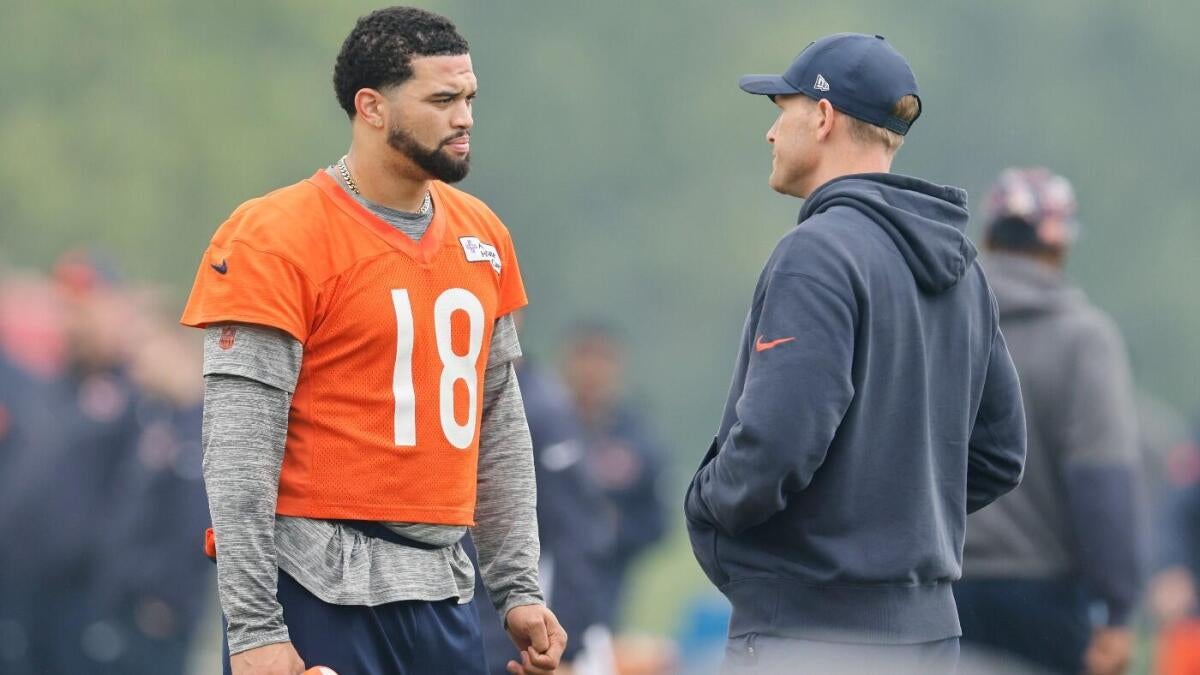Caleb Williams and the Chicago Bears: Mapping the Path to Ending a 105-Season Drought
The Chicago Bears, a storied franchise in the NFL, have endured an extended period without a 4,000-yard passer—spanning an astonishing 105 seasons. The arrival of Caleb Williams, a promising young quarterback and former No. 1 overall pick, presents a tantalizing opportunity to rewrite this narrative. Analysis of his rookie year performance, developmental trajectory, and the surrounding team context reveals the blueprint for how Williams could not only break this longstanding drought but also modernize the Bears’ offensive identity.
The Rookie Foundation: Setting the Stage
In his rookie season, Caleb Williams recorded 3,541 passing yards, the fifth-highest in Bears history for a first-year player. This establishes a strong baseline, especially considering the team’s historical struggles in consistently developing prolific passers. Notably, Williams faced 68 sacks, the third-most ever endured by a Bears quarterback, pointing to both challenges in offensive line protection and the grinding nature of his inaugural campaign.
Such statistics underscore two parallel realities: Williams possesses the talent to generate offense at a near-record level, yet the offensive infrastructure around him requires refinement to maximize this potential. The high sack count also indicates room for improvement in pocket awareness, play-calling, and pass protection schemes—each a critical factor in achieving the loftier 4,000-yard milestone.
Statistical and Probabilistic Landscape
Recent analytics from FanDuel Sportsbook place Williams at +280 odds to throw for 4,000 yards in the 2025 season. These odds translate to an implied probability of roughly 26.32%, reflecting a realistic, if challenging, path towards breaking the Bears’ century-long passing records. This cautious optimism aligns with the complexity of the task, balancing Williams’ evident skill with the historical performance and systemic factors within the franchise.
Contemporary NFL trends increasingly favor pass-heavy offenses, suggesting that Williams’ chances could improve as the Bears adapt to current league environments. An expansion in scoring opportunities, improved offensive coordination under new coaching, and strategic offseason acquisitions could all augment his yardage potential.
Addressing Line Protection and Offensive Scheme
The exceptionally high number of sacks Williams endured highlights a critical area for immediate attention. Improving offensive line performance can directly enhance Williams’ ability to execute plays with higher efficiency and reduced risk. Beyond personnel changes, evolving the offensive scheme to include quick-release passing options, improved blocking assignments, and creative play designs can lessen pressure and open passing lanes.
Moreover, Williams entering his second season with a new head coach offers a fresh opportunity to recalibrate the offense. Coaching philosophies that prioritize quarterback development, tailored game-planning, and situational adaptability will be key in managing defenses eager to exploit his rookie vulnerabilities.
The Historical Weight of a 105-Season Passing Drought
No NFL franchise with the rich heritage of the Bears has endured such an extended drought without a 4,000-yard passer. This historical context not only deepens the challenge but also magnifies the potential impact of Williams’ eventual breakthrough. Writing this new chapter would reinvigorate fan engagement and solidify Williams’ legacy as a transformative figure in Bears history.
The importance lies not just in reaching a statistical milestone but in signaling a shift toward a more dynamic and modern offensive era. It would be a symbolic and practical demonstration of progress after many seasons marked by inconsistent quarterback play and offensive struggles.
Opportunities Beyond the Numbers
Williams’ blueprint extends beyond pure yardage. His ability to read defenses, extend plays under pressure, and connect with a growing corps of skilled receivers establishes a more holistic vision for Bears’ offense. Continued growth in these areas can catalyze bigger plays, higher third-down conversion rates, and more scoring drives.
Furthermore, the culture surrounding Williams will influence his trajectory. A supportive offensive line, skilled teammates, and organizational stability are essential to sustain and build on early promise. The Bears’ management thus faces a critical balancing act between nurturing young talent and assembling competitive complementary pieces.
Conclusion: A Season of Potential Transformation
Caleb Williams’ path to ending the Chicago Bears’ 105-season passing yard drought is an intersection of individual talent, strategic evolution, and organizational commitment. His rookie season provided a robust foundation, but reaching and surpassing the 4,000-yard barrier will require improved protection, refined offensive schemes, and a collaborative team effort.
As the Bears approach the 2025 season, Williams stands poised to redefine franchise history. Achieving this milestone would not simply be a personal triumph but a beacon of resurgence for a legendary club seeking renewed relevance in today’s NFL landscape. The blueprint is clear; the challenge formidable. Success will depend on how well all elements align for this promising young quarterback and the team around him.





